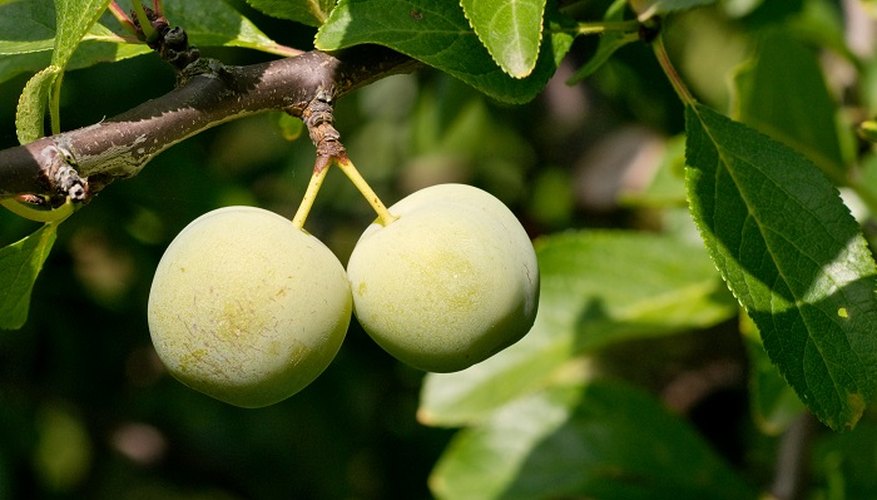The greengage plum tree produces sweet fruit for eating as well as jams and jellies. The tree responds well to pruning, showing better health and better fruit quantity and quality. Most pruning takes place while the tree is dormant, during the late winter or very early spring, before the tree buds start to swell. Keep in mind the practical reasons for pruning: to train the plant, maintain plant health, improve the quality of flowers, fruit, foliage or stems, and to restrict growth.
- The greengage plum tree produces sweet fruit for eating as well as jams and jellies.
- Keep in mind the practical reasons for pruning: to train the plant, maintain plant health, improve the quality of flowers, fruit, foliage or stems, and to restrict growth.
Remove all dead, diseased and broken branches with a sharp pruning saw or shears. Cut back to the first sign of green growth, visible as green in the wood inside the bark layer. Stay as close to the last bud as possible without removing the bud.
Make training cuts to keep the formation of the desired shape. Usually the best form is the modified central leader system, which calls for a central trunk off which several well-spaced lateral branches are allowed to grow. Remove any other lateral branches that crowd out this form. Cut back the central leader once the tree reaches the desired height.
- Make training cuts to keep the formation of the desired shape.
- Usually the best form is the modified central leader system, which calls for a central trunk off which several well-spaced lateral branches are allowed to grow.
Inspect the tree for water sprouts that grow straight up from the lateral branches. Sometimes this signals that the tree has undergone heavy pruning and should be pruned a little less for the next year or two. Cut off these growths 1.25 cm (1/2 inch) from their base.
Cut back spindly branches that are too weak to hold fruit without cracking. Prune them just after an outward-facing bud and where the branch is thick enough to hold fruit.
